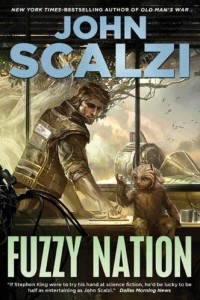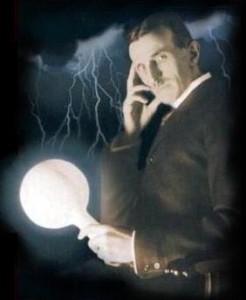![Redshirts_John_Scalzi1[1]](http://jpsnagi.com/wp-content/uploads/2012/07/Redshirts_John_Scalzi11-200x300.png) Redshirts by John Scalzi is one of those stories which are difficult to review, without spoiling, but I’m going to try.
Redshirts by John Scalzi is one of those stories which are difficult to review, without spoiling, but I’m going to try.
The story takes place in post-television 25th century future on an elite DubU ship – Intrepid. It is under the command of captain Abernathy, whose crew include science officer Q’eeng, first office Keerensky, medical office Hartnell and chief engineer West among others. Intrepid is on a peaceful mission to boldly go where no man has gone before. Sounds familiar? Well it should. During its explorations the crew encounters some hostile situations on different worlds, and quiet often there are away teams formed to deal with them.
The novel opens with some new crew members assigned to intrepid. They develop a sort of friendship while waiting for the shuttle in the bay that would take them to the ship. On reaching ship, they are take on their assigned tasks in different departments. They continue to meet when they are off duty, and found out that Intrepid has highest casualties for new crew members among any Dub U’s ships during these away missions, statistically. As they dig more and more, they find that there is some sort of space time continuum mix up where realities from different times seem to have intertwined.
I should stop now, because I think I have already said too much.
John has great ability to define his characters well and then develop them throughout his stories. This novel is no different. The new crew members Dahl (who is the protagonist), Duvall, Hester, Henson have characters that one easily understand when they interact while waiting in the shuttle bay. They do not always agree with each other. They also form a part of some of the away missions, and suffer losses. They start to observe a pattern, which the officers of the ship seem to be oblivious to. Over the course of events, their friendship, beliefs and trust for each other is tested. You start to identify with the characters, and can’t help but want them to control their own fate instead of letting the mixed up timelines decide what happens.
Redshirts does not disappoint at any place. It is a must read if you grew up with TV shows like the original Star Trek, or Dr. Who. The book is a nod to these and other cheesy space adventures of yesteryears. There are dozens of moments and in-jokes built around the worlds that are familiar and hilarious. It is darkly funny at times; even when things go wrong, John puts a smile on your face with interactions of his characters. The story moves at a fast pace, and is extremely well edited. There is nothing that does not add to the story or character development and you are drawn in. If you want to read a fun science fiction story during summer try this one.
If you like listening to books, get the audiobook. It is read by Wil Wheaton (Wesley Crusher from Star Trek – The Next Generation). Wil is very impressive voice actor, and he brings this book alive with his narration. He has collaborated with the author before in Fuzzy Nation and few others.
Both the book and the audiobook are highly recommended. I give this book 5 stars; hey, anything that can keep me up all night deserves 5 stars.
Jatinder PS Nagi
July 4, 2012




